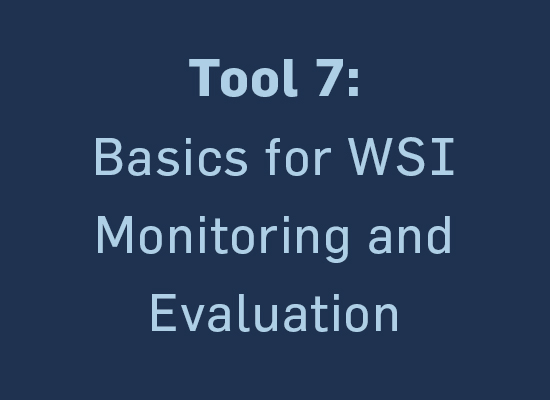| Tool | A broad overview of the importance of M&E to the integrity of WSIs and references for commonly used approaches. |
| Related Key Activities | Establish M&E. |
| Question Addressed | How can we determine to what extent we are achieving the objectives of our WSI? |
| Purpose | Increase trustworthiness of WSIs and enable the initiative to take corrective action:
|
| Possible Users | WSI managers with all participants. |
| Level of Effort | Continuous human resources, financial resources for data collection depending on indicators and available baseline information. |
| WSI Phase | Partnership monitoring through entire life cycle, results monitoring from the formalization phase onward. |
WSIs can be difficult to monitor, as partners contribute in different and sometimes informal ways. This may result in challenges to attributing outcomes to the WSI. Moreover, monitoring should focus on both the efficiency of the initiative itself (including how participants cooperate) and the progress toward achieving specific results. Without a robust monitoring framework and the systematic assessment of delivery against the set objectives, WSIs are not able to prove their added value to the public and its participants, as well as provide internal and external accountability for the resources used. Moreover, weak monitoring may lead to illegitimate claims by WSI participants (increasing risks of “green washing”) and can be the cause for misunderstandings and contradictory expectations on impact, outcomes, and contributions.
Having clear objectives within a WSI and the ability to track achievement against these objectives supports corrective management and guards against the manipulation or misdirection of resources, building overall credibility. Transparency about what the WSI has achieved fosters external trust concerning the motives of the WSI and its participants.



